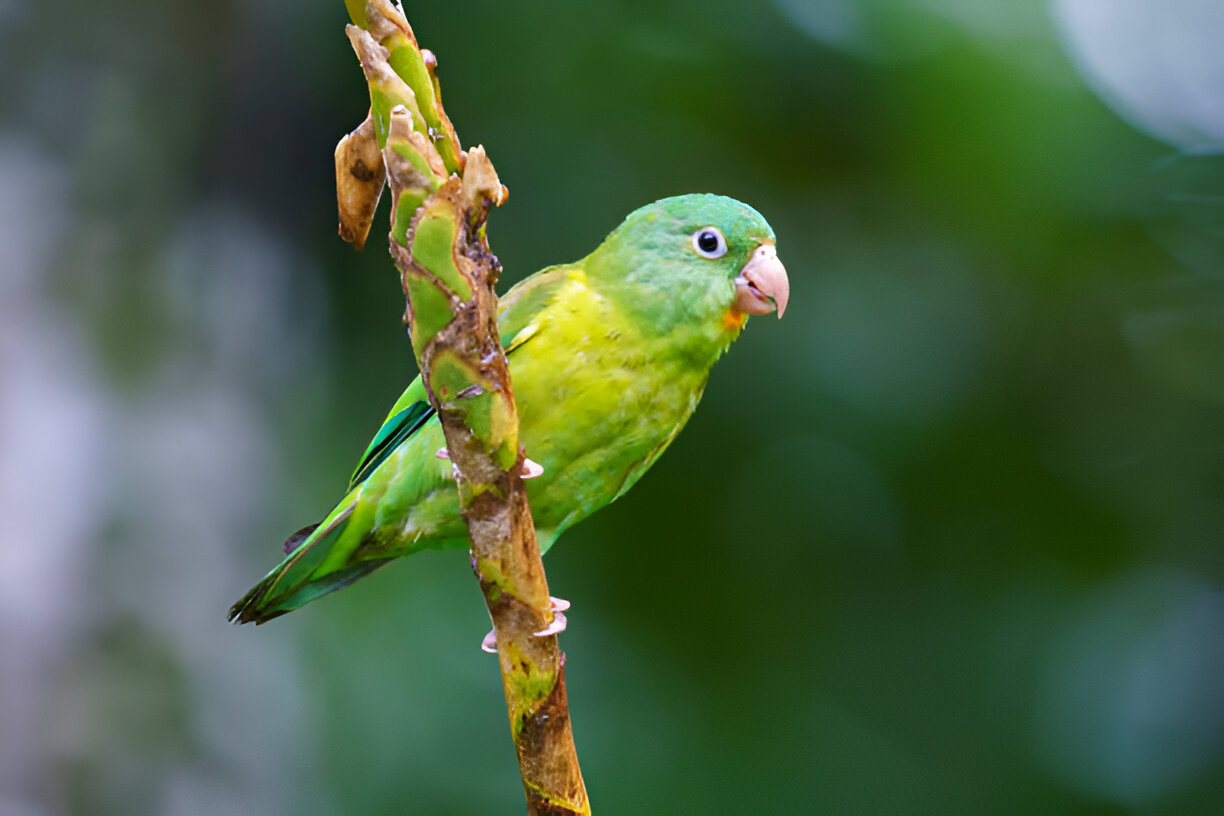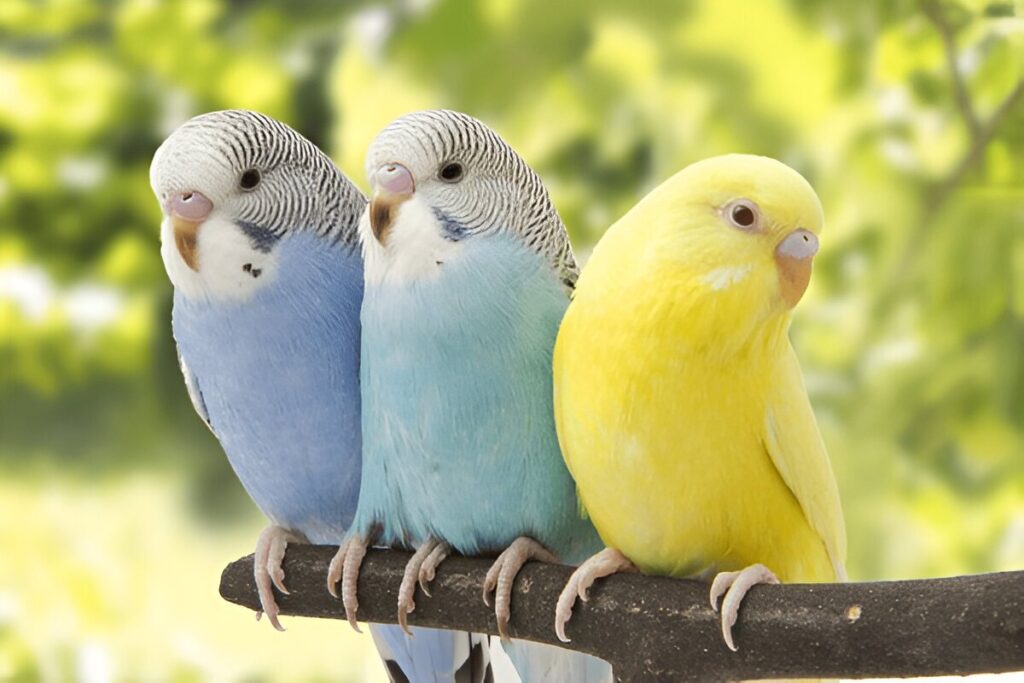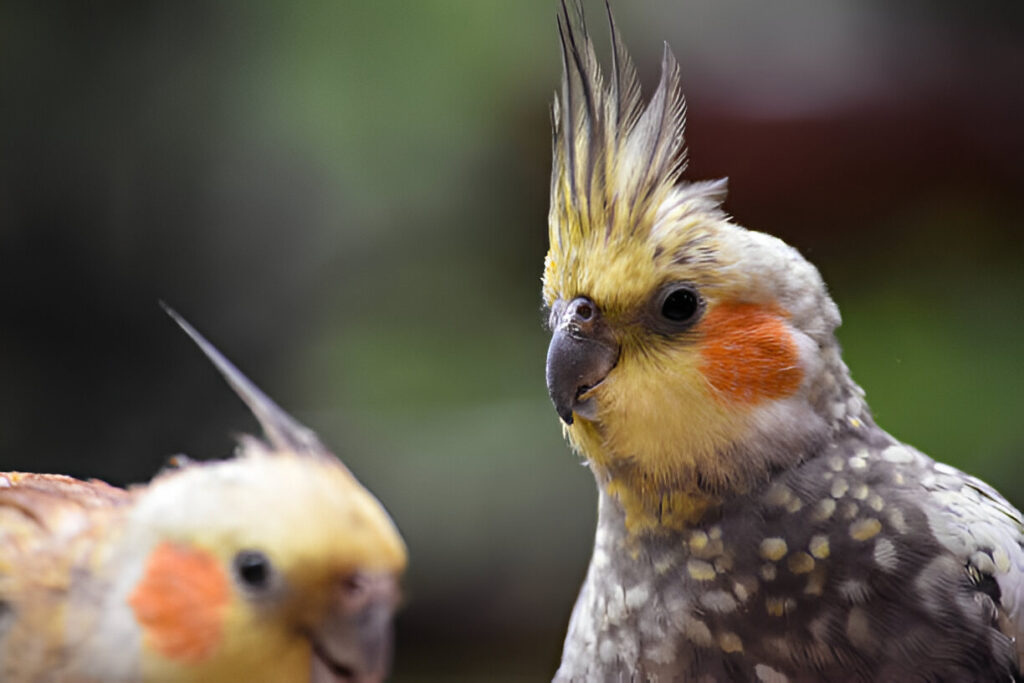Parrotlets: Tiny Birds with Big Personalities
Parrotlets, often referred to as “pocket parrots,” are small in size but big in personality. These vibrant, intelligent birds have become increasingly popular as pets due to their playful nature, striking colors, and relatively low maintenance compared to larger parrot species. Native to Central and South America, parrotlets are a fascinating addition to the world of aviculture.
In this comprehensive guide, we’ll explore everything you need to know about parrotlets, including their behavior, habitat, diet, lifespan, breeding habits, and care tips. Whether you’re a seasoned bird enthusiast or considering a parrotlet as your first pet, this blog will provide valuable insights into these charming little birds.
Introduction to Parrotlets
Parrotlets belong to the genus Forpus and are among the smallest parrot species in the world, typically measuring between 4 to 5 inches in length. Despite their small size, they are known for their bold and confident personalities. Popular species include the Pacific Parrotlet, Green-Rumped Parrotlet, and Spectacled Parrotlet. These birds come in a variety of colors, including green, blue, yellow, and white, making them a visually appealing choice for bird lovers.
Behavior and Personality
Parrotlets are often described as “feisty” and “full of energy,” and for good reason. These tiny birds pack a lot of personality into their small frames, making them a joy to observe and interact with. Despite their diminutive size, parrotlets are highly intelligent, curious, and social creatures that thrive on interaction and mental stimulation. Understanding their behavior and personality traits is the key to building a strong bond with these pocket parrots and ensuring they lead happy, fulfilling lives.
Playfulness: A Love for Fun and Exploration
Playful and energetic, parrotlets are naturally gymnastic birds. They love to climb, explore, and investigate their surroundings using their beaks and feet. A variety of toys is necessary to keep them amused and mentally stimulated. Foraging, chewing, and problem-solving toys are especially good. A parrotlet will be entertained for hours by puzzle toys, ladders, and swings.
Their playful nature also extends to their interactions with their owners. Parrotlets enjoy games such as peek-a-boo, fetch (with small objects), and even learning simple tricks. This playfulness reinforces the bond between bird and owner and helps avoid boredom, which can result in undesirable behaviors such as feather plucking or excessive chewing.
Bonding: Affectionate but Territorial
Parrotlets are popular pets that develop close bonds with owners. Once they become trusting of you, they will be quite affectionate, even requiring your company and enjoying being petted or held. They may even snuggle into your hand or perch on your shoulder for extended periods. This affectionate nature makes them wonderful companions for those who are willing to invest time in building a relationship.
Parrotlets can also be territorial, especially in their cages or spaces. They can be nippy if invaded or when not socialized well. Socialization should be done early and consistently so that they may get comfortable with people and other pets. Positive reinforcement, like treats and praise, will go a long way in encouraging good behavior and reducing territorial tendencies.
Vocalizations: Soft yet Expressive
Parrotlets are less loud compared to their larger relatives; nonetheless, they do have much to say. From chirping to whistling and occasional mimicking of some household noise or simple utterances, one could expect the following noises. In general, males are much more likely to sing and chatter; they simply love to get noticed and be in the spotlight.
Their calls are softer in comparison to other parrots, so they will easily fit in when one lives in an apartment or shares a house. However, they can be rather vocal in expressing feelings-be they happy, inquisitive, or annoyed. You get to know your bird more as you listen for the various sounds that are your bird’s ways of letting you know needs and moods.
Independence: Self-Entertaining but Social
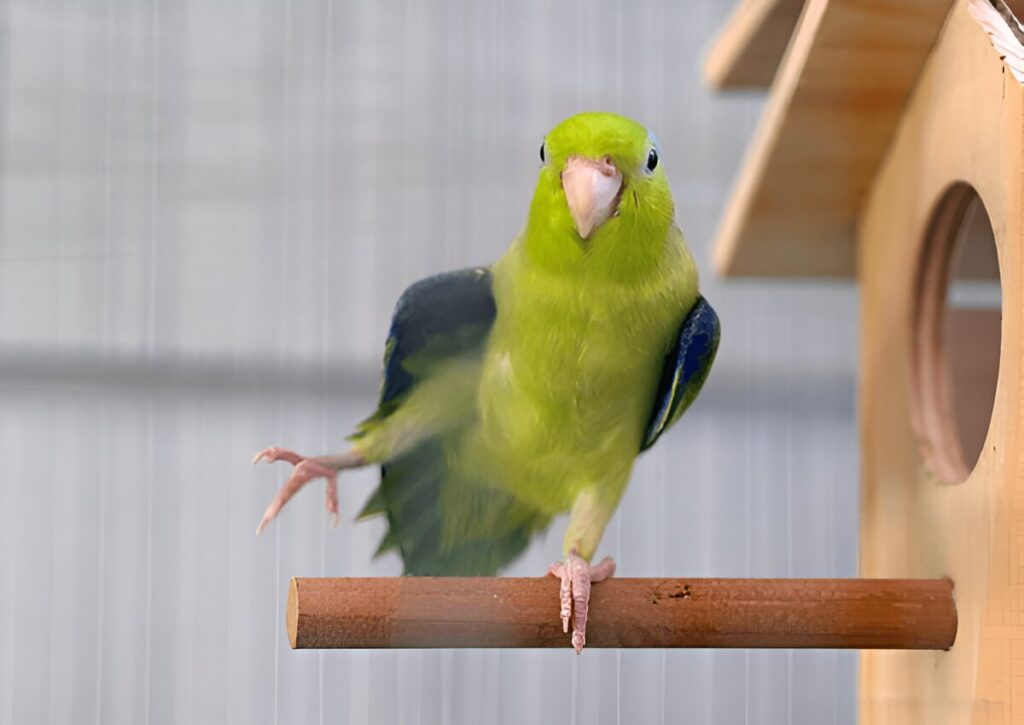
One interesting thing about parrotlets is the way their independent natures balance against their need for company. Unlike some other parrot types that demand attention at all times, the parrotlet is quite independent and may amuse itself for minutes at a time. This makes them a great choice for the busy owner who wants interaction but doesn’t have a lot of time to spare.
That said, parrotlets are social creatures and thrive on companionship. If left alone for too long, they can become lonely or bored, which may lead to behavioral issues. Providing plenty of toys, a stimulating environment, and regular interaction can help keep them happy and content. For those who are away from home frequently, consider getting a second parrotlet to keep your bird company, though introductions should be done carefully to ensure compatibility.
Curiosity and Intelligence
Parrotlets are both intelligent and curious birds. They love to be taken out for a new environment, investigate unfamiliar objects, and learn new skills. This curiosity makes them quick learners, and they can be trained to perform simple tricks, step up on command, or even mimic sounds. Training sessions not only provide mental stimulation but also strengthen the bond between you and your parrotlet.
Their intelligence is also a call for regular mental stimulation to keep them active. Rotation of toys, new games, and foraging opportunities will enrich their minds and prevent boredom.
Habitat and Natural Environment
Habitat and Natural Environment
Parrotlets are from Central and South America and are found in nearly all types of habitats, from tropical forests to open woodlands, savannas, and even desert areas. That has allowed them to live in almost any area, from highly dense jungles to wide open grasslands. They can normally be seen in a flock flying around and trying to feed on seeds, fruits, and insects with great sociability among other birds.
These small parrots are hole-nesting birds; they adopt any tree hole or abandoned nests as their potential brooding sites for laying eggs or rearing hatchlings. In contrast, although adapted well to human-modified landscapes, threatened habitat loss or deforestation at places reduces their populations. Saving the natural ecology, therefore, by supporting conservation helps them survive.
Diet and Nutrition
In the wild, parrotlets have a very omnivorous diet that includes seeds, fruits, berries, and insects. Such a diverse diet ensures they get all the necessary nutrients for good health in their natural environment. As pets, it is very important to replicate this well-balanced diet to keep them healthy, full of energy, and happy. What follows is a detailed look at what parrotlets should eat and how to ensure they receive proper nutrition.
Staple Diet: High-Quality Pellets The core of a pet parrotlet diet should be made up of high-quality pellet foods designed for small parrots. The pellets are designed to provide a balanced mix of vitamins, minerals, and nutrients so that your bird can get everything it needs in one place. Seek out pellets with no artificial colors, flavors, or preservatives.
- Why Pellets? Unlike seed-only diets, pellets avoid nutritional imbalances and deficiencies in birds fed only on seeds.
- How Much? They should make up about 60-70% of your parrotlet’s daily diet.
Fresh Foods: Fruits and Vegetables
Fresh fruits and vegetables are a big part of the parrotlet diet, providing a complete range of vitamins, minerals, and water intake. Provide a variety in type to keep your bird’s level of interest and ensure a wide range of nutrients.
- Fruits: Apples (remove seeds because they are toxic), berries, bananas, melons, and grapes are ideal types. Fruits need to be well cleaned and cut into small, bite-sized pieces.
Vegetables: These will include leafy greens like spinach, kale, and Swiss chard; carrots, broccoli, zucchini, and bell peppers are good, too. Steam or finely chop harder vegetables to make them more accessible to your parrotlet.
How Much?: Fresh foods should make up about 20-30% of your parrotlet’s daily diet.
Seeds and Nuts: Occasional Treats
Seeds, although natural in a parrotlet’s diet, should be treated as treats only and not staples. Seeds contain high amounts of fat and can be one of the causes of obesity and nutritional disorders when consumed in excess.
- Favorite Seeds: Millet, sunflower seeds, and safflower seeds are some seeds that parrotlets like.
- Nuts: Give almonds, walnuts, and pecans only as an occasional treat, but they must be unsalted and shelled.
- How Much? Seeds and nuts should not exceed 10% of your parrotlet’s diet.
Calcium: Crucial for Health
Calcium is very important to parrotlets, especially breeding females who require this for egg production. Lack of calcium may result in health problems such as weak bones or egg binding.
Cuttlebone: Place a cuttlebone in the cage to help provide a natural source of calcium and to also help in trimming your parrotlet’s beak.
Mineral Blocks: These are also given in addition to aid in calcium intake.
Calcium-Rich Foods: Provide dark, leafy greens, broccoli, and pellets fortified with calcium.
Hydration: Fresh Water
Always change fresh, clean water daily to prevent bacterial contamination of their water and to ensure your bird remains well-hydrated. Some parrotlets appreciate bathing in their water dishes, so consider providing a separate shallow dish just for this purpose.
Foods to Avoid
There are quite a few foods that can be toxic or cause harm and should never be given to parrotlets:
Avocado: Contains persin, which is toxic to birds.
Chocolate: Can cause serious health problems.
- Caffeine: It is found in coffee, tea, and soda, and is toxic to birds.
- Onions and Garlic: They may cause stomach disorders and anemia.
- Salty or Sugary Foods: These will create health problems.
Feeding Tips
- Variety is Key: Rotate different fruits, vegetables, and seeds to keep your parrotlet interested and ensure a balanced diet.
- Portion Control: Do not overfeed the bird; instead, provide small portions and monitor how much your bird is eating.
- Foraging Opportunities: Encourage natural behaviors by hiding food in toys or foraging boxes.
- Observe Preferences: Pay attention to what your parrotlet enjoys and adjust their diet accordingly, while still ensuring nutritional balance.
Lifespan and Health
With proper care, parrotlets can live between 15 to 20 years, and sometimes even longer. Common health issues include:
- Respiratory Infections: Caused by drafts or poor ventilation.
- Feather Plucking: Often a sign of stress or boredom.
- Obesity: Resulting from a diet too high in seeds and nuts.
Regular veterinary check-ups, a clean living environment, and a balanced diet are essential for maintaining their health.
Breeding Habits and Reproduction
Parrotlets are monogamous and form strong pair bonds. In the wild, they nest in tree cavities or abandoned nests. As pets, they require a nesting box and a quiet, stress-free environment to breed successfully. The female typically lays 4 to 6 eggs, which hatch after about 18 to 20 days. Both parents share the responsibility of feeding and caring for the chicks.
Caring for Parrotlets as Pets
Parrotlets make wonderful pets for those who understand their needs. Here are some care tips:
- Cage Requirements: Provide a spacious cage with plenty of room for flying and playing. Include perches, toys, and climbing structures.
- Social Interaction: Spend time interacting with your parrotlet daily to build trust and strengthen your bond.
- Mental Stimulation: Rotate toys regularly and introduce new activities to keep them engaged.
- Cleanliness: Clean the cage and food/water dishes regularly to prevent disease.
Training and Socialization
Parrotlets are intelligent and can be trained to perform simple tricks, step up on your hand, or even mimic sounds. Positive reinforcement, such as treats and praise, works best. Early socialization is key to preventing nippy or aggressive behavior.
Common Challenges and Solutions
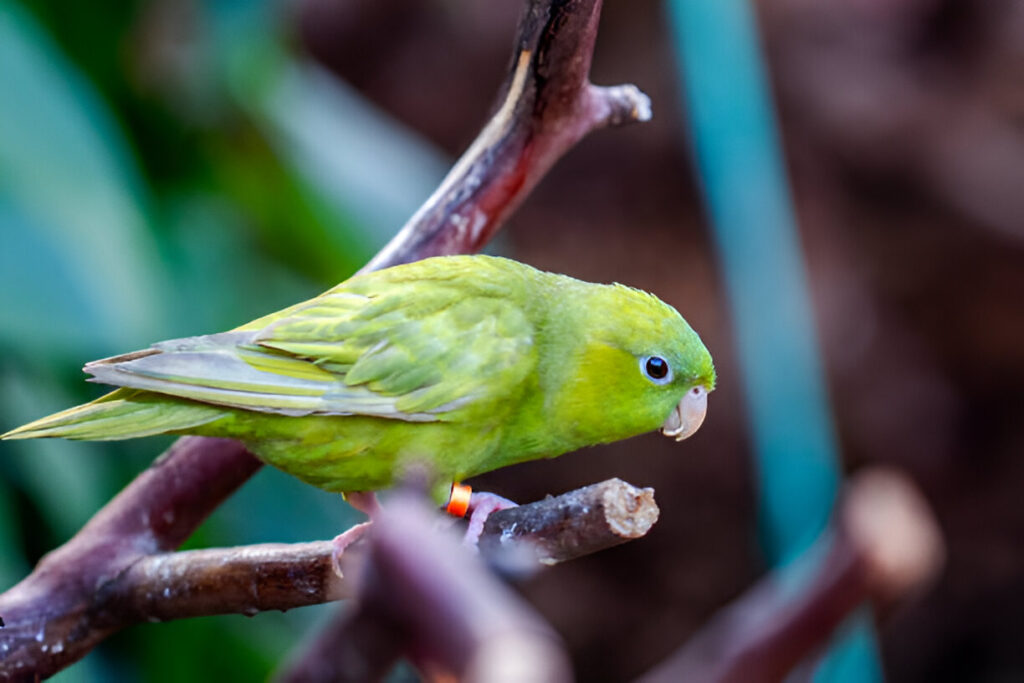
- Nippiness: Redirect their attention with toys or training to discourage biting.
- Loneliness: If left alone for long periods, consider getting a second parrotlet for companionship.
- Noise: While not overly loud, their chirping can be persistent. Provide enrichment to keep them occupied.
Interesting Facts About Parrotlets
- Size Doesn’t Matter: Despite their small size, parrotlets have the same intelligence and personality as larger parrots.
- Color Mutations: Selective breeding has produced a wide range of color variations, including blue, yellow, and white.
- Feisty Nature: Parrotlets are known for their boldness and will often stand their ground, even against larger birds.
Conclusion
Parrotlets are tiny birds with enormous personalities, making them a delightful addition to any home. Their intelligence, playfulness, and affectionate nature make them ideal companions for those willing to invest time and effort into their care. By understanding their needs and providing a stimulating environment, you can ensure a happy and healthy life for your parrotlet. Whether you’re a first-time bird owner or an experienced avian enthusiast, these pocket parrots are sure to bring joy and excitement to your life.
Yuns Legdm is a passionate advocate for pet care and the founder of this website, dedicated to providing valuable information for fellow pet lovers and veterinary professionals worldwide. With a deep love for animals, Yuns created this platform to connect passionate pet owners with expert insights from veterinarians around the globe.
This website grows with you—the passionate pet owners and veterinary experts—creating a trusted space where knowledge, experience, and love for animals come together. Whether you’re seeking advice on pet health, nutrition, or general well-being, this platform is here to support you on your journey of responsible and loving pet care.

